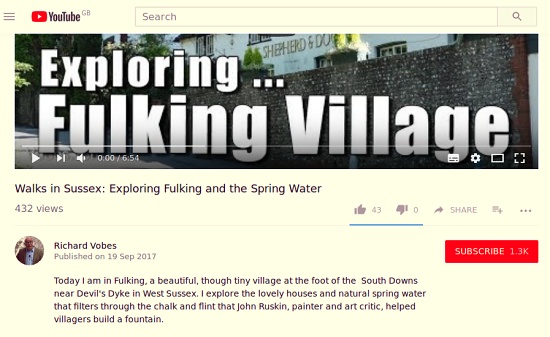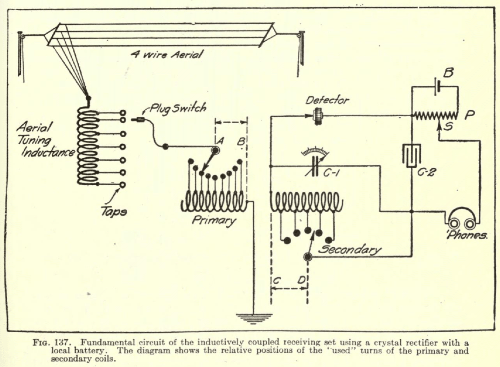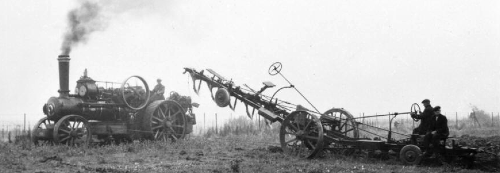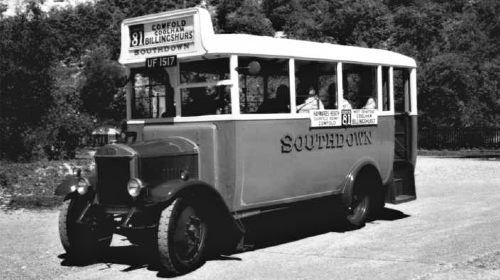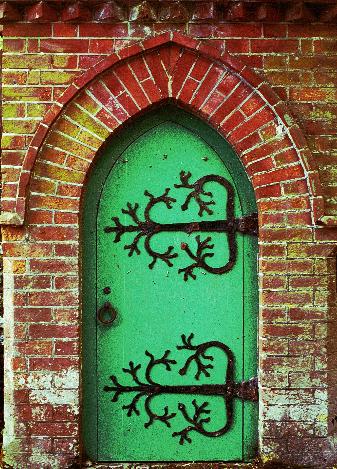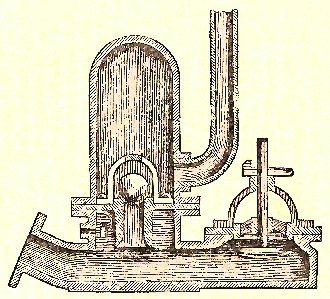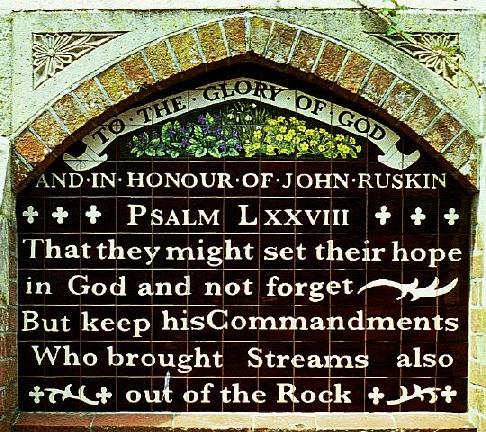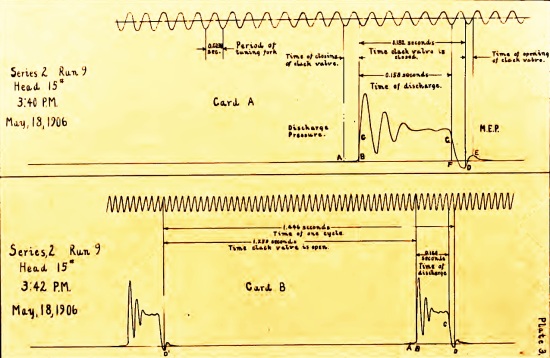
The West Sussex County Times reports that the South Downs National Park Trust has awarded FPC £1,039 to provide a visitor information board to help people understand the history and origins of the Fulking Ram Pump.
Category Archives: Ram House
Bobservation 53: Winter Thoughts
 Neighbours and Hedges
Neighbours and Hedges
Now I know most of us have, at some time, fallen out with the next door neighbours over the hedge between two properties. In the 26 years we have been at Furzefield only one family of neighbours have reacted sympathetically and been prepared to see our point of view. These are our current neighbours Simon and Laurence who arrived, with their sons from London, not two years ago. I cannot tell you how grateful I am for the way they have handled the matter. Curious that it takes an arrival from London to behave so well. Maybe we could all learn something from this. I have!!
John Ruskin
Friday February 8 will be the 200th anniversary of the art critic, writer and reformer John Ruskin’s birth. His memorial in Fulking is the fountain which graces the entrance to the North Town Field and the anniversary will be celebrated in London by an evening of readings and music at the Royal Academy. John Ruskin was instrumental in creating an efficient system of running water in Fulking in the 19th century which is now unfortunately defunct and only a facade. I imagine current Health and Safety regulations make any refurbishment of the system impossible. What a pity!.
Rampion Trench
Thanks for the manner in which the contractors have hidden the Rampion Trench and landscaped where it has crossed the highway. Rampion itself is, of course, a major local player in the fight against global warming, a battle that is probably the most important international problem of all.
Hopefully useful information
The recent death of my brother in law has, once again, reminded me how essential it is for the remaining partner to have all the useful information regarding finances, insurance, pensions, investments and other household details in an easily available place. It is quite simple to create a sheet of facts which can be regularly updated and prove a great help. Many widows (and widowers) find themselves at a complete loss to know how they stand financially and where to access details of all the contacts that are required when the unfortunate event occurs.
Bobservation No. 6
Water Supply Proposal – April 2015
Discussions between South Eastern Water, Southern Water, The National Trust and West Sussex County Council have lead to a proposal to implement a villager’s idea that the water supply system emanating at the Ram House by the Shepherd & Dog could be reinstated.
The advantages of this would be free drinking water available to villagers and passersby at both village pumps, availability of fresh water for washing at the Ruskin Fountain and a supply of water in the village in times of drought.
The disadvantages for some would be the permanent disconnection of the current water supply to all properties in the Street. This would, of course, mean that water for household, garden and indeed swimming pool use would have to be obtained by hand. Admittedly this would prove to be an anathema to some villagers although in some cases the gardener could provide the necessary manual labour involved.
It is proposed to hold a public meeting and take a vote of those attending in which case a majority of villagers would decide the outcome of the proposal.
1/4/15
A Ruskin Pilgrimage
[The essay that follows comprises a transcription of the twelfth chapter of Bygone Sussex written by William E.A. Axon and published in 1897. The illustrations also come from the book. Apart from a few minor punctuation changes, the text is exactly as it appeared originally.]
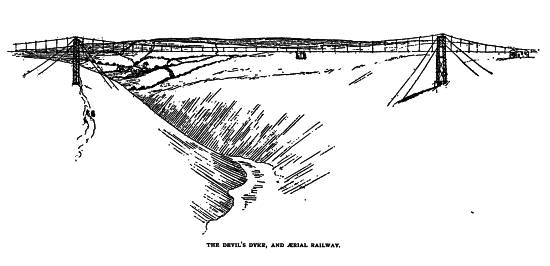 A favourite excursion of those who run down to the seaside to consult “one of the best of physicians” — he whom Thackeray has well described as “kind, cheerful, merry Doctor Brighton” — is to the Devil’s Dyke. To that picturesque spot with an evil name there come pilgrims by coach, by train, and on foot to gaze upon the wide expanding landscape of the Weald, to have their fortunes told by the gipsy “queens” who ply their trade in flagrant defiance of the statute book, or to disport themselves in the somewhat cockney paradise that has arisen on this lovely part of the South Downs. The Dyke itself is the work of Mother Nature in one of her sportive moods, when she seems to imitate or to anticipate the labours of man. Here she has carved out a deep trench that looks as though it were the work of the Anakim. It has its legendary interest also, for the Sussex peasantry hold, or held, that it came into existence by the exertions of the “Poor Man,” as the Father of Evil is here euphemistically called. Looking over the fertile Weald, his Satanic Majesty was grievously offended by the sight of the many churches dotted over the smiling plain, and he decided to cut a passage through the Downs so that the waters of the sea might rush through the opening and drown the whole of the valley. An old woman whose cottage was in the vicinity, hearing the noise made by the labouring devil in his work of excavation, came to her window, and holding her candle behind a sieve, looked out. The “Poor Man” caught sight of the glimmering light, and hastily concluded that the sun was rising. The mediaeval devil could only do his malicious deeds in the dark, and so he slunk away, leaving the Dyke incomplete, as we now see it. Lest anyone should doubt this story, the marks of the “Poor Man’s” footprints are still pointed out on the turf.
A favourite excursion of those who run down to the seaside to consult “one of the best of physicians” — he whom Thackeray has well described as “kind, cheerful, merry Doctor Brighton” — is to the Devil’s Dyke. To that picturesque spot with an evil name there come pilgrims by coach, by train, and on foot to gaze upon the wide expanding landscape of the Weald, to have their fortunes told by the gipsy “queens” who ply their trade in flagrant defiance of the statute book, or to disport themselves in the somewhat cockney paradise that has arisen on this lovely part of the South Downs. The Dyke itself is the work of Mother Nature in one of her sportive moods, when she seems to imitate or to anticipate the labours of man. Here she has carved out a deep trench that looks as though it were the work of the Anakim. It has its legendary interest also, for the Sussex peasantry hold, or held, that it came into existence by the exertions of the “Poor Man,” as the Father of Evil is here euphemistically called. Looking over the fertile Weald, his Satanic Majesty was grievously offended by the sight of the many churches dotted over the smiling plain, and he decided to cut a passage through the Downs so that the waters of the sea might rush through the opening and drown the whole of the valley. An old woman whose cottage was in the vicinity, hearing the noise made by the labouring devil in his work of excavation, came to her window, and holding her candle behind a sieve, looked out. The “Poor Man” caught sight of the glimmering light, and hastily concluded that the sun was rising. The mediaeval devil could only do his malicious deeds in the dark, and so he slunk away, leaving the Dyke incomplete, as we now see it. Lest anyone should doubt this story, the marks of the “Poor Man’s” footprints are still pointed out on the turf.
 Here, too, are the evidences of an oval camp with massive rampart and broad fosse, occupied probably by the Romans, whose coins have been found, and by still earlier warlike inhabitants of the district. When the eye has satisfied itself with the fine prospect, landward and seaward, we may undertake a short pilgrimage to a little known Ruskin shrine. Below us northward are the villages of Poynings, Fulking, and Edburton. The last is known to archaeologists for its leaden font, which is said to date from the end of the twelfth century. Here Laud, the pious, ambitious, unscrupulous, and unfortunate prelate, is said to have officiated. To him is attributed the gift of the pulpit and altar rails in the church.
Here, too, are the evidences of an oval camp with massive rampart and broad fosse, occupied probably by the Romans, whose coins have been found, and by still earlier warlike inhabitants of the district. When the eye has satisfied itself with the fine prospect, landward and seaward, we may undertake a short pilgrimage to a little known Ruskin shrine. Below us northward are the villages of Poynings, Fulking, and Edburton. The last is known to archaeologists for its leaden font, which is said to date from the end of the twelfth century. Here Laud, the pious, ambitious, unscrupulous, and unfortunate prelate, is said to have officiated. To him is attributed the gift of the pulpit and altar rails in the church.
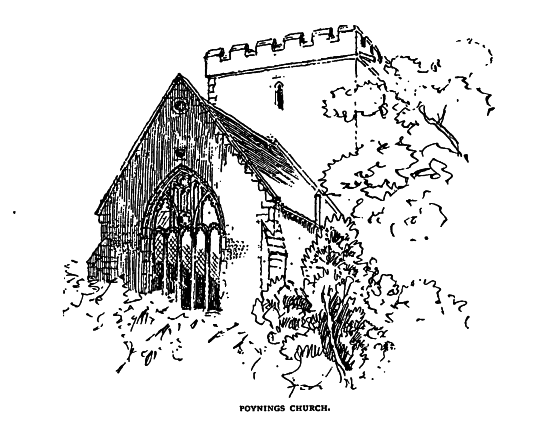 Descending the steep slope of the South Downs, and breathing the invigorating air which has won so many praises, we are soon in a rustic road that leads to the church of Poynings. The church is one of great interest and dignity. It is early Perpendicular, cruciform, and has a square central tower. The alms box is an ancient thurible of carved wood. “Puningas” — and Punnins is still a local pronunciation — was restored, with other lands, to the thane Wulfric by King Eadgar, who pardoned some of his vassal’s slight offences in consideration of receiving 120 marcs of the most approved gold. When Domesday Book was compiled the manor was held by a feudatory of the powerful William de Warren. Inside the church are some monuments of those stalwart soldiers, the Poynings, and outside there are still traces of their ancient home from the time of Stephen to that of Henry VII. Their name is enduringly written in our history in “Poyning’s law“. In 1294, Sir Michael, lord of this manor, was summoned to Parliament as the first Baron de Ponynges. His son Thomas was slain in the great sea-fight at Sluys. The son of this soldier was Sir Michael, the third baron, who was with Edward III at Crecy, and at the surrender of Calais in 1347. When he returned to his castle, he was appointed one of the guardians of the Sussex coast, then in danger of a French invasion. When he died in 1368, he bequeathed “to him who may be my heir” a “ruby ring which is the charter of my heritage of Poynings”. The barony passed by the distaff to the Earls and Dukes of Northumberland. Sir Edward Poynings, a grandson of the sixth baron, had his home at Ostenhanger in Kent. Whilst Lord Deputy of Ireland, he induced the Irish Parliament, in 1494-5, to pass a measure by which all the laws of England were made to be of force in Ireland, and no bill could be introduced into the Irish Parliament without the previous sanction of the Council of England. He died in 1521 the Governor of Dover Castle. “Who more resolved than Poynings?” asks Lloyd, “whose vigilancy made him master of the Cinque Ports, as his valour advanced him general of the low-county forces, whom he led on to several services with such success, and brought off, with the loss of not above an hundred men, with honour from the Lady Margaret, and applause from the whole country.” Poynings passed by sale to the Brownes, and by failure of heirs reverted to the crown in 1797.
Descending the steep slope of the South Downs, and breathing the invigorating air which has won so many praises, we are soon in a rustic road that leads to the church of Poynings. The church is one of great interest and dignity. It is early Perpendicular, cruciform, and has a square central tower. The alms box is an ancient thurible of carved wood. “Puningas” — and Punnins is still a local pronunciation — was restored, with other lands, to the thane Wulfric by King Eadgar, who pardoned some of his vassal’s slight offences in consideration of receiving 120 marcs of the most approved gold. When Domesday Book was compiled the manor was held by a feudatory of the powerful William de Warren. Inside the church are some monuments of those stalwart soldiers, the Poynings, and outside there are still traces of their ancient home from the time of Stephen to that of Henry VII. Their name is enduringly written in our history in “Poyning’s law“. In 1294, Sir Michael, lord of this manor, was summoned to Parliament as the first Baron de Ponynges. His son Thomas was slain in the great sea-fight at Sluys. The son of this soldier was Sir Michael, the third baron, who was with Edward III at Crecy, and at the surrender of Calais in 1347. When he returned to his castle, he was appointed one of the guardians of the Sussex coast, then in danger of a French invasion. When he died in 1368, he bequeathed “to him who may be my heir” a “ruby ring which is the charter of my heritage of Poynings”. The barony passed by the distaff to the Earls and Dukes of Northumberland. Sir Edward Poynings, a grandson of the sixth baron, had his home at Ostenhanger in Kent. Whilst Lord Deputy of Ireland, he induced the Irish Parliament, in 1494-5, to pass a measure by which all the laws of England were made to be of force in Ireland, and no bill could be introduced into the Irish Parliament without the previous sanction of the Council of England. He died in 1521 the Governor of Dover Castle. “Who more resolved than Poynings?” asks Lloyd, “whose vigilancy made him master of the Cinque Ports, as his valour advanced him general of the low-county forces, whom he led on to several services with such success, and brought off, with the loss of not above an hundred men, with honour from the Lady Margaret, and applause from the whole country.” Poynings passed by sale to the Brownes, and by failure of heirs reverted to the crown in 1797.
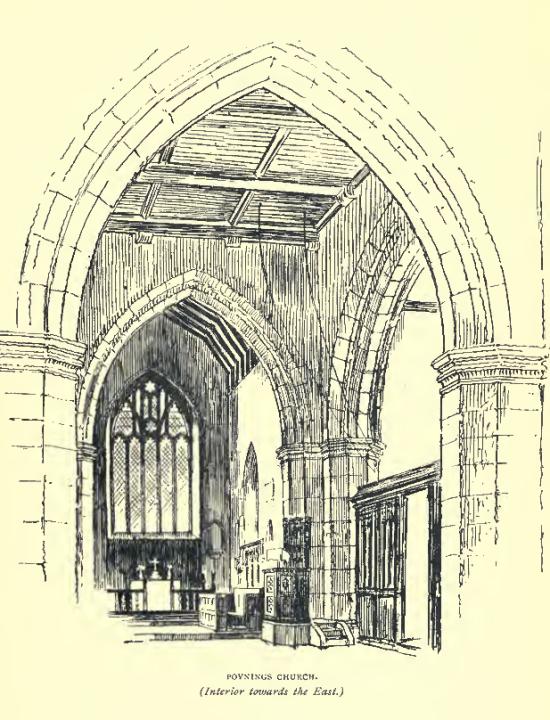
From Poynings there is a road leading to Fulking, and on the way many capital views of the round breasts of the South Downs can be had. Fulking is merely a hamlet of the parish of Edburton, and is a somewhat debateable land, for whilst it is situated in the Rape of Lewes, the parish to which it is a tything, is in the Rape of Bramber. It contains about 1,330 acres of arable, pasture, and down land. In Domesday Book it is mentioned under the name of Fochinges, and was then held of William de Warren by one Tezelin, of whom nothing more is known. It was situated in Sepelei (Edburton ?), which William de Braose held. Before the Normans came, Harold held it in the time of King Edward. It was assessed, both in the Saxon and Roman times, at three hides and a rood.
It is a striking evidence of English persistence. This little hamlet has continued for more than eight centuries; how many more no one can say. It has not even been important enough to have its own separate church, but, nevertheless, it has persisted manfully in the struggle for existence. A winding street of mingled villas and cottages is the Fulking of to-day, nestling in trees, beneath the sheltering wings of the South Downs, and apparently as unconscious of the gaieties of Brighton as if it were a thousand miles away.
Fulking is the end of our Ruskin pilgrimage, for here on the right hand of the road is a fountain with a red marble tablet, on which is inscribed:
TO THE GLORY OF GOD
AND IN HONOUR OF
JOHN RUSKIN.
PSALM LXXVIII
THAT THEY MAY SET THEIR HOPE
IN GOD AND NOT FORGET.
BUT KEEP HIS COMMANDMENTS
WHO BROUGHT STREAMS ALSO OUT OF THE ROCK.
John Ruskin, who besides being a teacher of art and ethics, is also a geologist, was appealed to by some friends of Fulking who were anxious as to its water supply. There is an abundant gathering ground, but Nature appeared to be elusive, and the water courses ran other ways. Mr. Ruskin’s aid was effectual, and the ancient hamlet has now its own abundant supply. Lower down the road, and past the hostelry of the “Shepherd Dog” — a true South Down sign — is the storage house of Fulking Waterworks. On the tablet of this we read:
HE SENDETH SPRINGS
INTO THE VALLEYS
WHICH RUN AMONG THE HILLS
OH THAT MEN WOULD
PRAISE THE LORD
FOR HIS GOODNESS
The exact source of the first inscription will be seen in Psalm cxxviii, 7 and 16; and of the second in Psalm civ, 10, and cvii, 8, 15, 21, 31.
Those who honour Ruskin as a great teacher of truth and righteousness, will find something appropriate in this memorial of him in the solitary street of the little hamlet, whose feudal lord once upon a time was Harold, the last of the Saxon kings.
Reference
- William E.A. Axon (1897) Bygone Sussex. London: William Andrews & Co., pages 137-143 [PDF].
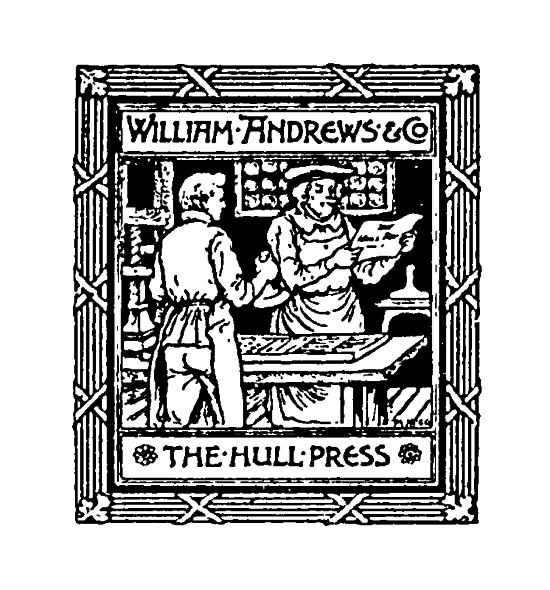
Fulking Parish Council — Meeting Thursday 10th April 2014 at 7:30pm
In the Village Hall. Members of the press and public are welcome to attend.
- Chairman’s Welcome.
- Apologies.
- Declaration of Interest.
- Approval of minutes 9th January 2014
- Matters Arising from the above minutes not on the agenda (to include Planning inc. Old Pump House, Highways Flooding & Operation Watershed, Lady Brook Spring, Footpath 4f update, Winter Management, NTF Trees).
- Reports from District & County Councillors.
- Preston Nomads
- NTF mowing contract
- Water Fountain
- Fireworks
- Financial Matters (including Cheque List & Stubs, Income & Expenditure to date, quarterly bank reconciliation), Financial Regulations.
- Annual internal audit.
- Annual Parish meeting speaker update & refreshments.
- Thank you — Street Light, Table, NTF Trees & Fencing
- Comments from the floor.
- Dates of next meetings.
Andrea Dickson, Clerk to Fulking Parish Council
01444 451 060 / andreadicksonfpc@gmail.com
Village Action Plan – August 2013
You can download the Village Action Plan – August 2013 version by clicking the link below.
Fulking 1922-1956
[The essay that follows was written in 1957 by Edgar Bishop, a central figure in village life during the period that it covers. He lived in Brook House and ran a large market garden from land mostly on the west side of Clappers Lane. Some thirty to forty people worked there and, with Henry Harris, he was one of the two major local employers.]
In looking back over the past thirty four years it is quite astonishing to note the many changes which have taken place in the village life: in 1922 when we came to the district, Fulking and Edburton were very quiet isolated Downland villages, the Dyke Railway being practically the only dependable link with Brighton, barring, of course, one’s legs. I well remember arriving at the Dyke Station in that thick mist, wondering how on earth I was going to find Fulking — but with the friendly help and guidance of a native I was piloted down the hill and arrived safely in the village.
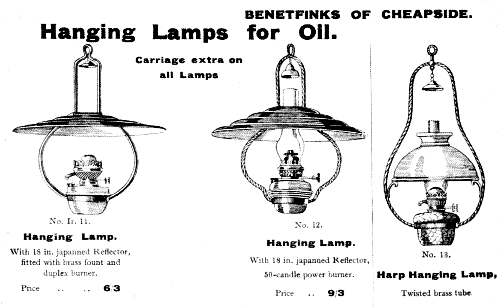
How things have changed since those days of long ago — paraffin and colza [rapeseed] oil was the only means of light so that the most important morning task of every housewife was the cleaning, trimming and refilling of the lamps. Telephones did not exist and when the G.P.O. started encouraging people to use them it was largely a question of getting a sufficient number of subscribers together to warrant the main lines being laid — in the end thirteen of us grouped together and agreed to have the phone installed, this being the minimum number acceptable to the G.P.O. Then came the difficulty of getting the Brighton Corporation to lay cables for electricity and here it was only with considerable and joint pressure from both the Poynings and Fulking inhabitants that the Corporation agreed to extend the mains through from the London Road side.
The one and only school — the Church School (now Boundary House) provided the education but unfortunately disagreement arose between the East and West Sussex Authorities over the administration, and the church lost the School. Incidentally the School had been given under a deed of trust by Lord Leconfield but unfortunately it lapsed and so bureaucracy stepped in and the school was closed.
Wireless was in its infancy — we all remember the elusive crystal — entirely dependent on batteries which required constant renewal — and television was of course unknown. Very few motor cars passed through the villages and there was no motorised farm machinery, with the exception of steam engines — the mechanised plough consisted of two steam engines posted on opposite sides of a field with the plough being drawn across by means of a cable.
The present Mission Church of the Good Shepherd in Fulking was then the men’s ‘Club Room’ and library and the Village Hall did not exist. It should be remembered that it was only due to the unceasing efforts of the then Rector, the Reverend Evans, who was responsible for obtaining a grant from the Chichester Diocesan Finance Board, that sufficient money was made available to build the Church Hall, after which the ‘club room’ was altered and devoted entirely to church services.
When the Southdown Bus service started — I cannot remember in which year that was — what a revolution ensued: villagers hitherto confined to their homes now trooped into Brighton, especially on Saturdays, for the first time. It was not long after the advent of cars and buses that the Dyke Railway ceased to function.
More recently, I believe it was in 1952, main water was brought to the village, thereby doing away with the water supply from the spring and pumped up to the storage tanks by the Ram: this has been instrumental in bring water to almost all the houses and cottages and is obviously the forerunner of main drainage. It is gratifying to know that the Crown who now own the Ram House, has undertaken to maintain it in a good state of repair.
Looking back over these years one cannot help somewhat regretting the passing of so much that was valuable in the life of our villages, and wonder whether all the modern means of comfort and transport have brought a real increase of happiness to the country folk.
Looking at Fulking particularly, especially on a Sunday, it seems to have become a thoroughfare for hundreds of motorists, motorcycles and coaches, which tear through our old time village, very often at most dangerous speeds. We are all caught up in a social revolution but whether it is leading to the greatest happiness of the greatest number, only time will tell.
Edgar H. Bishop
[This essay first appeared in issue 35 of St. Andrew’s Quarterly, July 1957. For more information about the author, see Anthony R. Brooks (2008) The Changing Times of Fulking & Edburton. Chichester: RPM Print & Design, pages 64, 81, 83, 165, 180, 345 and 347.]
Currently popular local history posts:
2012 10 11 PC Minutes
Minutes of Ordinary Parish Council Meeting at 7.30pm on 11 October 2012 held at the Village Hall
Present: Chairman Ms K. Watson, Vice Chairman Mr M Trist Councillors Ms L. Dyos, Mrs P. Rowland and Clerk to the Council Mrs Andrea Dickson. Chairman of Mid Sussex Council Mandy Thomas-Atkins, MSDC Councillor Colin Trumble, West Sussex District Councillor Peter Griffiths and 12 members of the public
1. Chairman welcomed the members of the public and introduced Chairman of Mid Sussex Council — Councillor Mandy Thomas-Atkins
2. Apologies: None
3. Declaration of Interest: None
4. The minutes of the previous meeting held 12 July 2012 having been previously circulated, were taken as read and approved and signed by the Chairman.
5. Matters Arising.
Planning: Old Pump House — In July 2012 enforcement order that was lodged in October 2011 was upheld by the planning inspector. A period of 9 months has been given to cease residential use and one extra month to remove the caravan and tidy up the land.
Market Garden — The PC met with Nick Rogers (Development Manager) and Steven King (Team Leader) planning investigation and enforcement, both Mid Sussex planning, at the end of August. Market Garden and other general planning queries were discussed. Progress with Mid Sussex planning will be monitored. The PC will be writing to MP Nick Herbert to ask for his help in addressing various issues relating to travellers. The PC was disappointed to hear that some residents did not feel that it had pulled its weight over the Market Garden issue. The councillors felt it needed to go on record that a large amount of work goes on behind the scenes and that they felt very frustrated over the issue. The public could comment on this matter at the end of the evening when comments are invited from the floor.
Preston Nomads — Only 4 (possibly 2) of the initial 6 people are still interested in the parking spaces. Residents who wish to take up the parking spaces need to collect padlock keys, those who do not intend taking up the spaces need to return the post keys. If anybody knows of anybody else that may be interested in a space please contact the Clerk. The car park area will be planted this month with indigenous plants. The possibility of filling in the potholes in the bridleway immediately outside the entrance is being looked into by Preston Nomads. The PC wish to thank Paul Hird for his work on this matter. (Clerk) A reminder that planning applications which fall within the SDNP are now posted on the South Downs website rather than Mid Sussex.
Highways: A meeting was held with highways on the 25 September to discuss ongoing problems.
Shepherd & Dog — A temporary cure is in place; however with autumn approaching it is felt that more work needs to be carried out. WSCC have investigated and will submit a request for further works, after which the PC will look at turfing the banks to complete the works. Stones have been washed down from the bridleway onto the highway by The Shepherd & Dog. Highways are going to discuss this with the bridleway owner and public rights of way.
Lady Brook Spring — A works order has been raised by WSCC to fence the spring. As a temporary solution the bollards will be replaced with a fibreglass plate over the entrance. A notice will be placed in Pigeon Post to gauge interest in making a feature of the spring. (Clerk)
Four Acres Corner — The drain & pipe have been flushed through. The size of the sump should have been increased at the same time — this was not done. Tim Boxall WSCC will chase this up. Once this work has completed the PC will monitor the situation.
Clappers Lane banking — The condition of the banking is the responsibility of the adjoining landowners. Highways have written to them but received no response. Highways suggested that the PC write to the Landowner & the person responsible for the damage Grange Farm and Badgerswood respectively. (Clerk).
Clappers Lane road surface — Highways will write to the landowner opposite The Sands to request that the ditches be cleared/kept clear. Highways were on site earlier today with Drainage Strategy team to look at the north end of the road. Contrary to what the PC had previously been told, it appears that no works order had been placed for the road surface to be repaired prior to that meeting. Highways suggested that all landowners be reminded to cut back hedges as winter approaches- this should be a request in Pigeon Post. A suggestion was made at the Village Plan meeting that signs could be placed at the north end of Clappers Lane saying something like “do not follow SatNav – unsuitable for large vehicles” Highways and PC will look for suitable signage for each end of the village.
Footpath 4f — This is still with the legal department; the order is expected to be made in the near future. The PC will be advised and then there will be a 28 day statutory objection period.
Stiles & Gates — The repair and maintenance of stiles and gate on public rights of way are the responsibility of the landowner over which the route crosses. This is also the case for trees, hedges, side vegetation and fences. The only exception are bridges which are the responsibility of Highways.
Ram Pump House — The National Trust have completed the work on the door and lock. Kate Watson and the National Trust are the key holders.
North Town Field — This will be addressed as a separate agenda item.
Councillor Vacancy — There is still a vacancy so please ask around.
PC Official documentation — The Standing orders, Financial Regulations, Code of Conduct and Declaration of Interest are all available via the Website, or as a hard copy from the Clerk.
Training Courses — The Clerk is half way through the first module of the Working with your Council Course. The clerk is also attending a networking day in November.
Joint Parish Meeting — This was held at Albourne in September. Councillors were present from Albourne, Poynings, Twineham and Woodmancote. Disappointingly nobody from MSDC planning attended the meeting, even though they were invited as a large part of the meeting revolved around planning. Councillor Sue Seward has asked to be copied in on any planning issues, and she will try and arrange a meeting with the planning dept to discuss concerns. All councils will review in six months and decide the way forward. Faster Broadband was discussed at the meeting; Fulking had a good response with 66 households expressing an interest in faster broadband. Please encourage anybody who has not already signed up to the scheme to do so. Suppliers are being invited to tender by the summer of 2013 with the faster broadband being in place by 2015.
Website — The new website is up and running and very easy to use. The new website address is fulking.net.
WSCC Councillor Peter Griffiths gave a brief report. He apologised for his absence from recent meeting; this is due to a clash of duties. In the future the two main costs to West Sussex will be care of the elderly and the cost of waste disposal. Providing these services will mean that other services will need to be reduced. It was suggested that an article be placed in the Pigeon Post with regards to the mobile library service. (Clerk)
6. Councillor Colin Trumble MSDC gave a brief report: Council Tax changes to benefits consultation will be completed by December. Auditing of single occupancy claims will be carried out to ensure it is fair. E-bills will be available to those who wish to pay that way, it is envisaged that this will save a lot of money. Grants to community groups that do not need matched funding. Money may still be available, but would have to be spent within the current financial year. Colin to provide more information on this. Budget Work has started on this for 2013/2014. Travellers were mentioned briefly and Councillor Linda Dyos said that he would be hearing from the PC shortly on the matter. Councillor Colin Trumble left the meeting 7.45pm for other commitments.
7. Financial Matters. The following payments were agreed and cheques signed: 100582 SALC Clerk’s networking day 60.00; 100583 Clerk’s salary & expenses 934.77; 100584 Councillor expenses 11.20. Cheque stubs were cross checked with the cheque list and both signed. The quarterly bank reconciliation was checked and signed. It was agreed that the Financial Regulations would be changed to state Internal audits would be carried out Annually rather than regularly as previously stated. (Clerk) It was agreed that the PC would look into setting up E banking (Chair)
8. Winter Management: The winter management plan is well underway. A meeting will be held in the next few weeks with WSCC to discuss the plan. Once it has been finalised a copy will be posted on the website and on the parish notice board. (Clerk) Farmer David Ellin still has an agreement with WSCC for the loan and use of the snow plough .(Michael Trist will contact the farmer when it is necessary to use the snow plough ). The clerk attended the Mid Sussex Emergency Planning liaison Group meeting in September and had nothing to report back from the meeting. It was felt that as Fulking is a small parish, the meeting would not have much relevance and therefore apologies would be sent for future meetings.
9. Risk Assessments: The Financial risk assessment and risk assessment having previously circulated were agreed and adopted. They will be placed on the website or hard copies available via the clerk. (Clerk)
10. Playground inspection review: The annual Rospa inspection was carried out in June; this highlighted a low risk of entrapment in the gate. The PC asked if anybody had any ideas how this risk could be eliminated? Mark Stepney will carry out the remedial work on the trip hazard and the moss which were also highlighted in the annual inspection. The weekly inspection rota needs to be updated. (Clerk). New inners for the bins in the playground need to be purchased (Clerk)
11. Community Bus: Has provided a service to Fulking for 20 years two days per week. It is free to bus pass holders, otherwise journeys will cost between 1-2 depending on the length of the journey. The PC agreed to give a contribution of 100 for this financial year. This will be reviewed annually. An article will be put in Pigeon Post to give details of the service provided. (Clerk) A thank you letter is to be sent to the providers (Clerk).
12. Fountain: The PC will arrange for the bollard in front of the fountain opposite Laurel House, to be fixed. Paula Hazard has the bollard. (Pam Rowland to contact Mark Stepney).
13. Crime Update: Crime in Fulking was low over the summer. Please stay vigilant. A notice about cheap shed alarms from MSDC will be placed in the noticeboard, website & Pigeon Post. (Clerk)
14. Comments from the floor: Card making day on 13 October. The Police Authority Elections were mentioned. Where is the Polling Station? This is to be looked into & published on website and noticeboard.The Polling Station is Playing Field Pavilion, Poynings BN45 7BH (Clerk)
15. Dates of the next meeting: The next Parish Council meeting will be held on 10 January 2013
Meeting closed at 9.05pm
[ BoilerPlate plate = “PC_Disclaimer” ]
John Ruskin, the pump house, and the fountain
Artist, botanist, geologist, poet, polymath, proto-socialist, writer (39 volumes), and much else besides, John Ruskin (1819-1900) was a cultural colossus of Victorian England. He gave his first sermon when he was five years old and published his first journal article when he was fifteen. Today he is primarily remembered as the greatest art historian of his era. Residents of Fulking, however, have another reason to remember him — as a civil engineer: “He smiled a little at himself in later years when .. he said that civil engineering was his true bent and that his devotion to literature and art had all been a mistake, and that England had lost in him a second Telford.” [E.T. Cook (1912) The Life of John Ruskin, London: George Allen, Volume II, pages 163-164]
“The inhabitants of Fulking .. had for a long time a great difficulty in obtaining an adequate supply of drinking water. A hilly gathering ground was near, but nature seemed to have intended the water for other localities. All sorts of expedients were adopted, but all proved a failure. It happened that Ruskin occasionally visited the district, and the idea occurred to somebody that he might be able to help. The request was a strange one, but Ruskin began to think what could be done and, in the end, devised a scheme which has given Fulking as much water as it can ever hope to consume. Works have of course been required, but they did not cost very much, and they certainly do not disfigure the locality. The people have not been slow to show their gratitude for the boon thus conferred, and near the well which gives the inhabitants a constant service they have erected a beautiful marble memorial.” [Pall Mall Gazette, August 26, 1891, from the Manchester Examiner, reproduced in The Works of John Ruskin, London: George Allen, Volume 34, page 719. PDF]
“John Ruskin .. had the idea of harnessing the waters of the Fulking stream to power an hydraulic ram which would pump the supply around the parish. The little Gothic pump house is still there and on it is a plaque bearing an inscription from Psalms 104, 10 and 107, 8.” [Brigid Chapman (1988) West Sussex Inns, Newbury: Countryside Books.]:
“The various structures associated with the village’s ingenious nineteenth century water supply are a unique feature of Fulking. Around 1886, water from the spring (located close to the Shepherd and Dog Public House) was harnessed to provide the village with its own piped water supply. Two men are credited with devising and instigating this scheme. One was John Ruskin .. and the other was Henry Willett from Brighton. The system supplied the village with piped water until mains water eventually arrived in 1951. The arrangement consisted of an hydraulic ram driven by water from a brick lined reservoir/balancing tank (located in the garden of the Shepherd and Dog) pumping water up to a reservoir close to Old Thatch on the north side of The Street. Although no longer working, the system remains largely intact today.” [Ed Lancaster (2008) Fulking Conservation Area, Haywards Heath: MSDC, page 9. PDF]
Tony Brooks reports that Ruskin used to stay at The Old Bakehouse (next door to the Shepherd and Dog) and that the new water supply involved “four reservoirs: one under each of the hand pumps in The Street, one for the drinking fountain by the entrance to the North Town Field and one at Perching Manor. The villagers maintained the system and the last person known to have been in charge of it was the local builder, Charlie Franks, who lived in Fulking all his life”. [Anthony R. Brooks (2008) The Changing Times of Fulking and Edburton 1900 to 2007, Chichester: RPM, page 29.]
The key component of the Ruskin/Willett scheme was the hydraulic ram pump. It was invented by Joseph Michel Montgolfier in 1796 and modern versions are still in use today. Its key advantage is that it requires no external source of energy beyond that supplied by an existing water flow.
“The pumphouse by the roadside was part of the supply arrangements which continued until a new supply was provided in 1953. There is a small fountain in the village which [bears] the following inscription: ‘To the glory of God and in honour of John Ruskin Psalm LXXVIII that they might set their hope in God and not forget but keep his commandments who brought streams also out of the rock’.” [“A Ram Pump at Fulking”,Sussex Industrial Archaeology Society Newsletter 5, January 1975].
Ruskin’s water supply collaborator, Henry Willett, a wealthy local brewer, was responsible for erecting the fountain with its inscription. Ruskin, however, was less than enthusiastic, writing to Willett in June 1887, with “sincere thanks for your kind note .., but I am too sad and weary just now to see anything; and I was grieved by your inscription on the fountain, for it made my name far too conspicuous, nor did I feel that the slightest honour was owing to me in the matter” [The Works of John Ruskin, London: George Allen, Volume 37, page 591.].
For more information on the local water supply, see Anthony R. Brooks (2008) The Changing Times of Fulking and Edburton 1900 to 2007, Chichester: RPM, pages 28-30. Interested readers may also wish to try and track down the following items: (i) Paul Dawson “John Ruskin, Fulking and the water supply”, Friends of Ruskin’s Brantwood Newsletter, Spring 1996; and (ii) Joyce Donoghue “Looking into Ruskin’s Sussex connection”, Friends of Ruskin’s Brantwood Newsletter, Spring 1995.
Currently popular local history posts:

